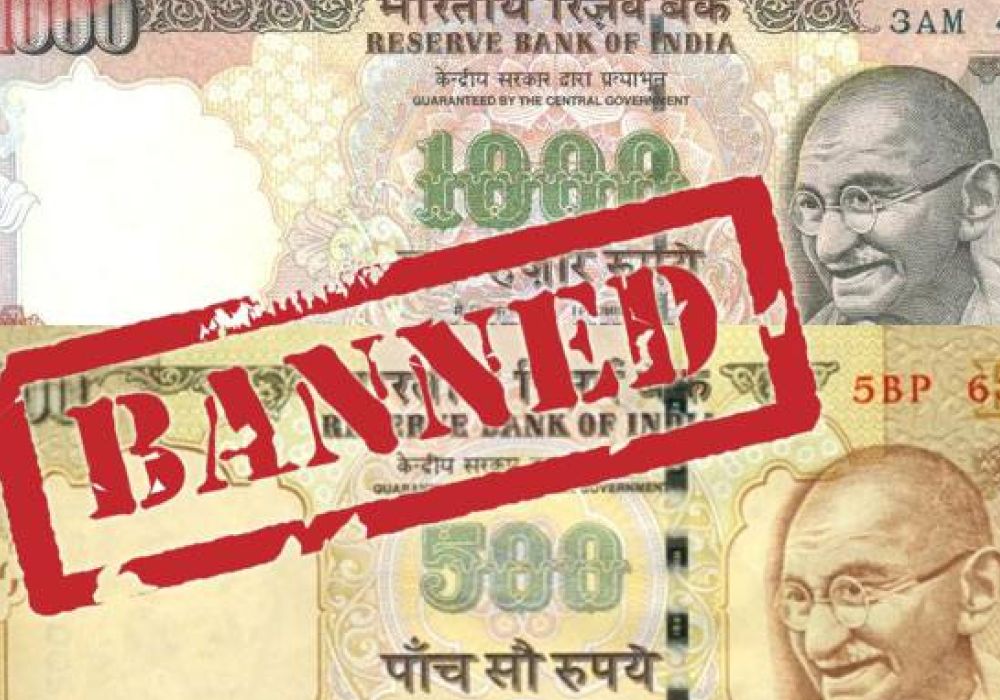Our Topic
Demonetization
What is demonetization?
Demonetization is a process by which a currency loses its status as legal tender, meaning that it can no longer be used as a medium of exchange for goods and services. This usually occurs when a government decides to replace an old currency with a new one or to combat illegal activities such as corruption, counterfeiting, or money laundering.
In the context of India, demonetization in 2016 involved the government's decision to ban the use of all 500 and 1,000 rupee notes, which accounted for the majority of the currency in circulation at the time. The old notes were replaced with new 500 and 2,000 rupee notes, and people were given a limited time to exchange their old currency for the new one. This move was aimed at combating black money, counterfeiting, and corruption, among other things.

Objective of demonetization
Curbing corruption and black money
Demonetization was aimed at curbing the circulation of unaccounted cash, preventing the generation of black money, and making it difficult for corrupt individuals to store and use their illegal wealth.
Increasing tax revenues
By bringing more people into the formal financial system and promoting a shift towards digital transactions, the government expected to increase tax compliance and boost tax revenues.
Promoting digital payments
: The demonetization move was expected to encourage people to shift towards digital transactions, which would help to reduce the use of cash in the economy, promote transparency, and reduce the incidence of tax evasion.
Boosting economic growth
The government expected demonetization to have a positive impact on the economy by promoting transparency and accountability, reducing the informal economy, and increasing financial inclusion.
Impact of demonetization on Indian economy
Short term impact in which demonetization impacted the economy
Potential long-term impacts of demonetization on India's growth trajectory:
Effects on GDP
Demonetization had a negative impact on the Indian economy in the short term, as it led to a slowdown in economic growth. This was due to reduced demand, lower consumer spending, and disruptions in the informal sector, which accounts for a significant part of the Indian economy. However, over the long term, demonetization is expected to have a positive impact on the economy by promoting transparency, accountability, and financial inclusion, and reducing the informal economy.
Will demonetization slow down India’s growth?
- Demonetization did lead to a slowdown in India's economic growth in the short term.
- The long-term impact of demonetization on India's growth trajectory is still a matter of debate among economists and policymakers.
- Proponents argue that demonetization has the potential to accelerate growth by promoting financial inclusion, formalizing the economy, and reducing corruption and tax evasion.
- They also suggest that the shift towards digital payments and the formalization of the informal sector could lead to increased productivity and efficiency, which could drive economic growth.
- Critics argue that the short-term disruptions caused by demonetization, such as the cash crunch, reduced demand, and disruption of the informal sector, could have a long-lasting impact on the economy.
Conclusion
Moreover, demonetization had a mixed impact on the demand, prices, and GDP of the Indian economy, with negative effects in the short term and potential positive effects in the long term. In the future, it is important for policymakers to consider the potential consequences of such policies on different segments of society and the economy as a whole, and to implement them in a way that minimizes the negative effects and maximizes the positive effects.

- Presented by-
- Sahil Srivastava
- Mridul
- Uday bhatiya